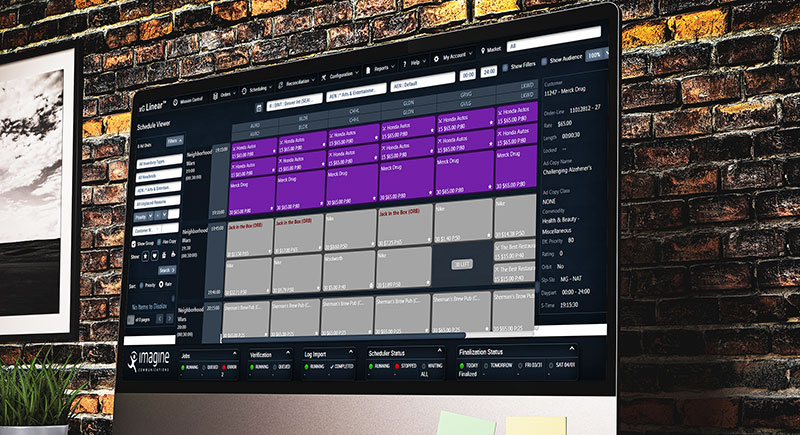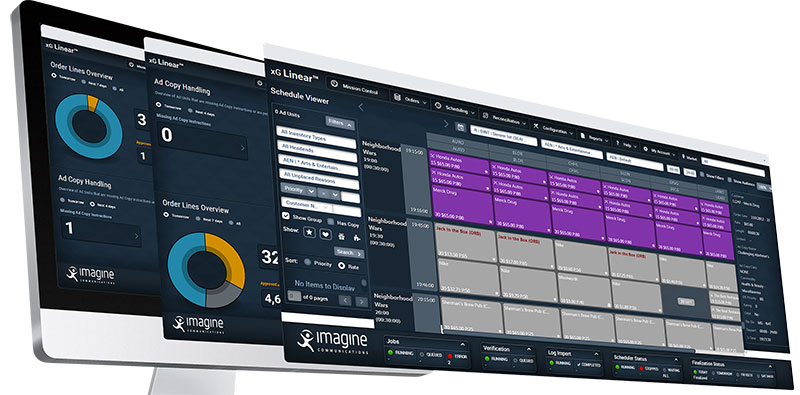Updates to Imagine Communications xG Linear v2.6 advertising management platform for MVPDs aim to reduce users’ ad placement time and use ad inventory more effectively.

Updates to Imagine Communications xG Linear v2.6 advertising management platform for MVPDs (multichannel video programming distributors) aim to shorten users’ ad placement time and use ad inventory more effectively.
xG Linear is enterprise-level ad management software with features for ad placement, copy management, schedule optimisation and real-time visibility. Users can deploy it on-premises, or access it through a cloud-hosted platform. Through open APIs, xG Linear integrates the ad technology partners that advertisers need to reach audiences and run ad campaigns, such as demand- and supply-side platforms, agency trading desks, ad servers and ad networks. xG Linear can scale to 10,000 headends to match the volume and complexity of most sales operations.
Efficient ad placement is a matter of matching ads with inventory spots that generate the most income for the provider – and hopefully for the advertiser as well. Thus, the new xG PlacerPlus feature intends to both reduce ad placement time – according to Imagine, by up to 90 percent – and help operators determine how to gain the highest return from that placement. When a new order comes in, the placer recognises its value and automatically displaces lower-cost ads into lower value spots, making higher value inventory available for higher-value ads.

Media companies can affect revenue by the way they use inventory and distribute ad units. XG Linear’s new features include automated vertical and horizontal spot movement, improved placement logic and the option to use cost-per-second instead of a static rate when ranking ad units.
Efficiency and Automation
With xG PlacerPlus, MVPDs can use automation to make workflows efficient by limiting the need to make changes manually to the schedule viewer, potentially saving operations teams several hours a week. Colour-coded ad unit icons in the schedule viewer also help to quickly identify applicable ad unit inventory.
Converged Workflows
Ad Unit Classification capabilities enable users to define tracking of non-linear ad units at the order line level – that is, tracking the link between the production order and the source of demand. This means media organisations can transition to converged workflows, track impression-based ad units and manage ad campaigns across all TV channels, including linear, connected TV and FAST. imaginecommunications.com




















